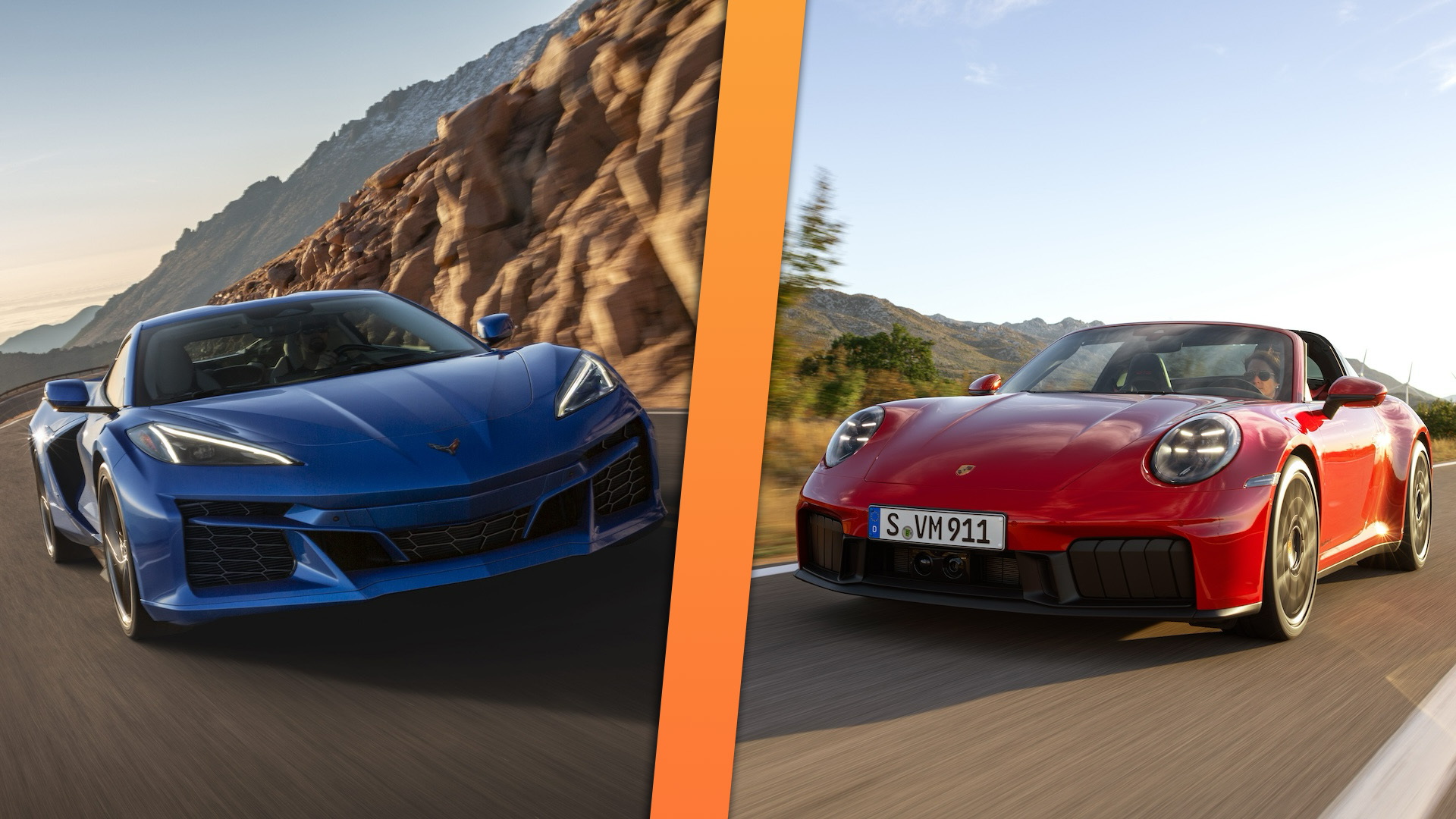

The 2025 Porsche 911 hybrid is here, and it’s as innovative as we’ve come to expect from Porsche. But it’s not the only serious sports car to go hybrid recently, with the Chevrolet Corvette E-Ray making the lap just last year. The two beg for comparison, though they’re much less alike than their similar performance lets on.
Let’s start with the newer of the two—the updated 911 Carrera GTS, with its 3.6-liter, single-turbo flat-six and pair of cleverly integrated motor-generators. One is mounted on the shaft between the turbo’s compressor and turbine wheels, both reducing lag and turning excess turbo rpm directly into almost 15 horsepower of electric boost. (It’s pretty much exactly like an MGU-H in a Formula 1 car.) The other is crammed into the 911’s upgraded dual-clutch “PDK” automatic, and can generate up to 53 hp and 110 lb-ft of torque.

By contrast, the Chevy is simpler, with its combustion engine and transmission remaining the same as in the base model—a 6.2-liter small-block V8 and and an eight-speed auto. The E-Ray’s hybrid system is confined to its front axle, where Chevy puts a drive unit that makes 160 hp and 122 lb-ft. That gives the E-Ray not just all-wheel-drive, but the ability to move the Corvette under electric power alone. Its 1.9 kilowatt-hour battery (the same as the 911’s) gives only three to four miles’ range, but that’s better than the Porsche‘s zero.
In a straight line, the advantage looks to be all Chevy’s, as the E-Ray makes a total of 655 hp and 470 lb-ft to the Porsche’s 532 hp and 449 torque. Between that and its AWD, you won’t be surprised to hear the E-Ray handily beats the 911 from zero to 60 mph, dispatching it in 2.5 seconds (with one-foot rollout) to the Porsche’s 2.9—still by no means shabby. On the top end though, the Chevy‘s extra unsprung mass may hamper it; the E-Ray runs out of steam at 183 mph, while the Porsche pushes on to 194.

The 911 may also be able to claim better handling, as it gets standard rear-wheel steering and weighs 241 pounds less. It can also be fitted with electro-hydraulic roll control, which improves ride comfort. Its added ride comfort goes further still if you spec the 911’s (now-optional) two-plus-two seating configuration, whereas the Corvette fits only half that equation.
All that extra tech (and the Porsche badge) cost a pretty penny though, and they effectively put the 2025 Porsche 911 Carrera GTS and Chevy Corvette E-Ray in two different classes. The E-Ray starts at $106,595, while the Porsche is almost 60 percent pricier at $164,900 plus delivery. One is much easier to call a performance bargain than the other, if either are even worthy of the title. But as for which is the quickest around a track? That’s yet to be decided.
Got a tip or question for the author? You can reach them here: james@thedrive.com